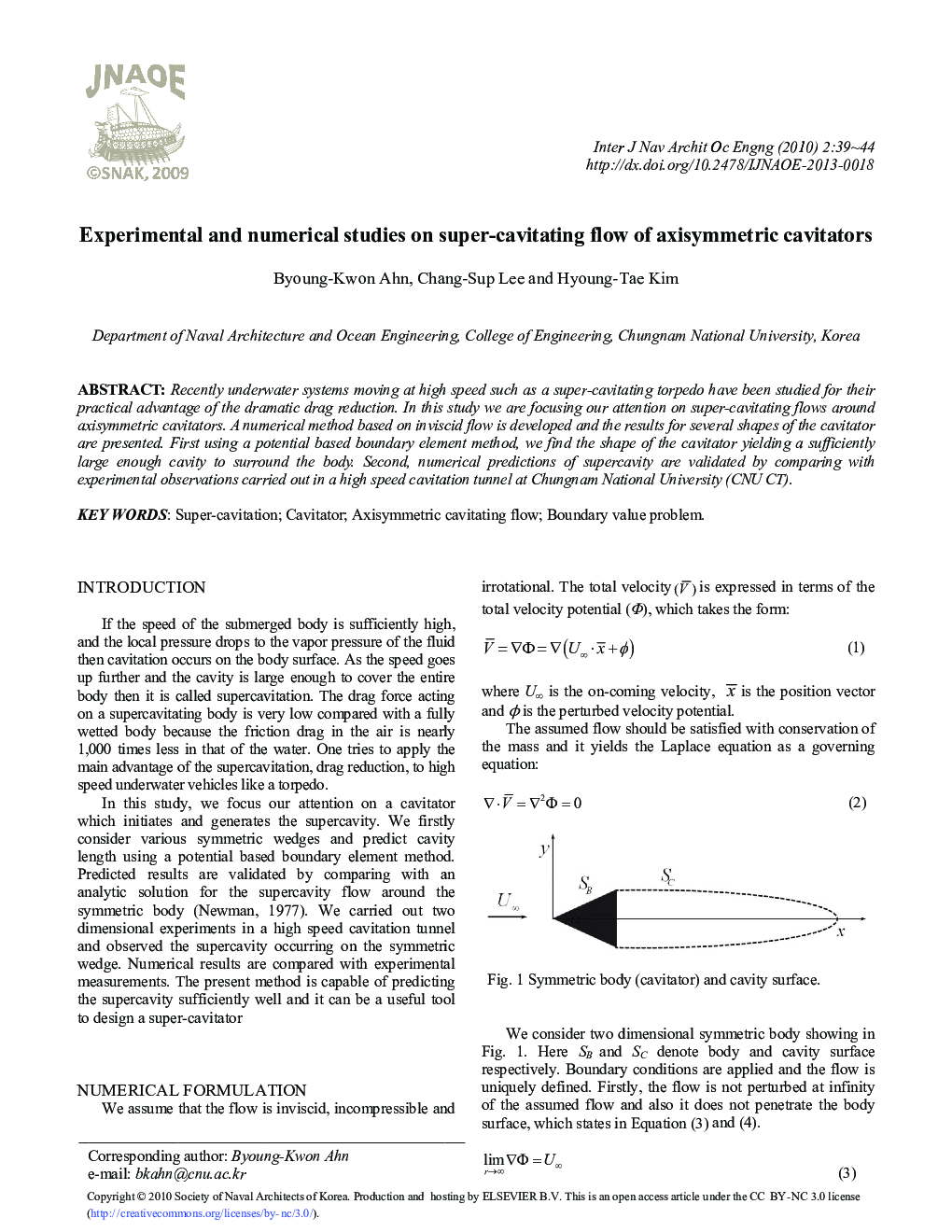| Article ID | Journal | Published Year | Pages | File Type |
|---|---|---|---|---|
| 4451924 | International Journal of Naval Architecture and Ocean Engineering | 2010 | 6 Pages |
Abstract
ABSTRACTRecently underwater systems moving at high speed such as a super-cavitating torpedo have been studied for their practical advantage of the dramatic drag reduction. In this study we are focusing our attention on super-cavitating flows around axisymmetric cavitators. A numerical method based on inviscid flow is developed and the results for several shapes of the cavitator are presented. First using a potential based boundary element method, we find the shape of the cavitator yielding a sufficiently large enough cavity to surround the body. Second, numerical predictions of supercavity are validated by comparing with experimental observations carried out in a high speed cavitation tunnel at Chungnam National University (CNU CT).
Keywords
Related Topics
Physical Sciences and Engineering
Earth and Planetary Sciences
Oceanography
Authors
Byoung-Kwon Ahn, Chang-Sup Lee, Hyoung-Tae Kim,
